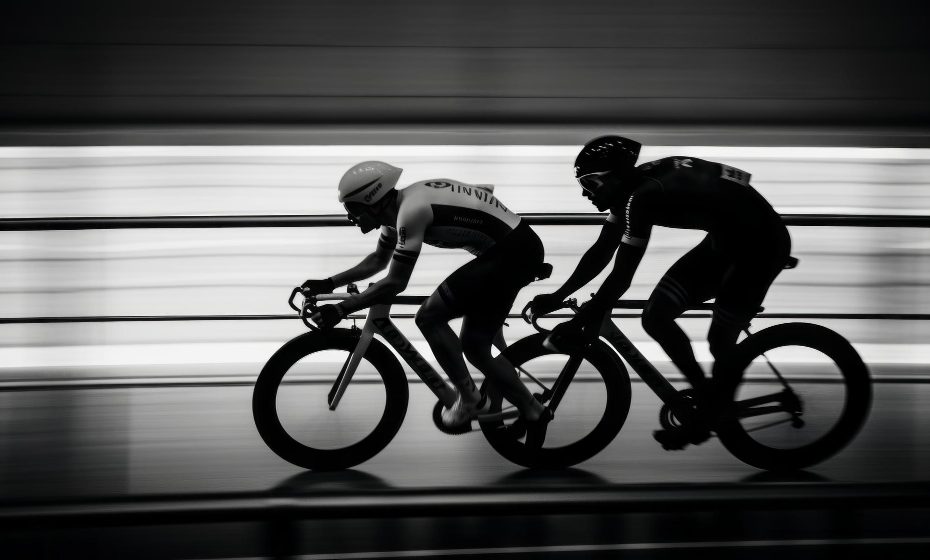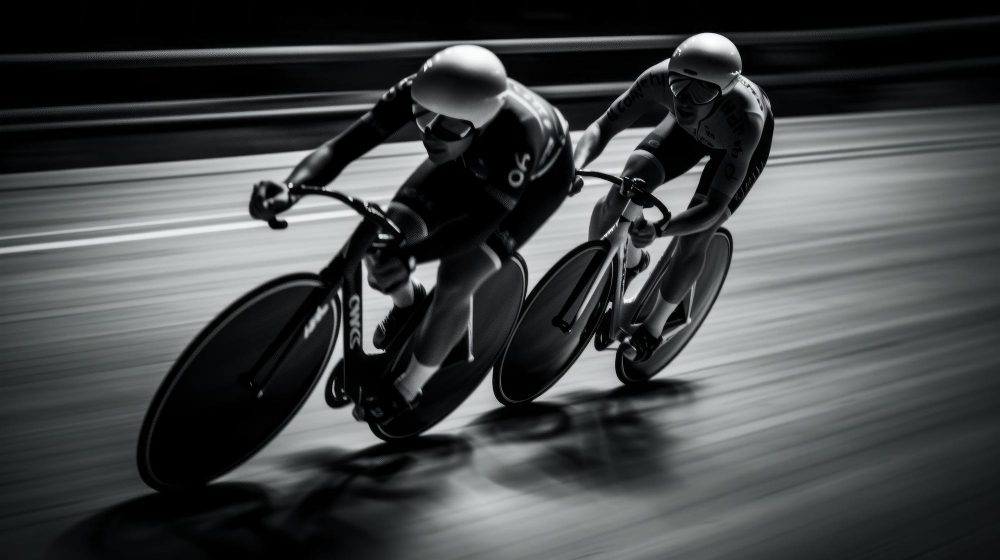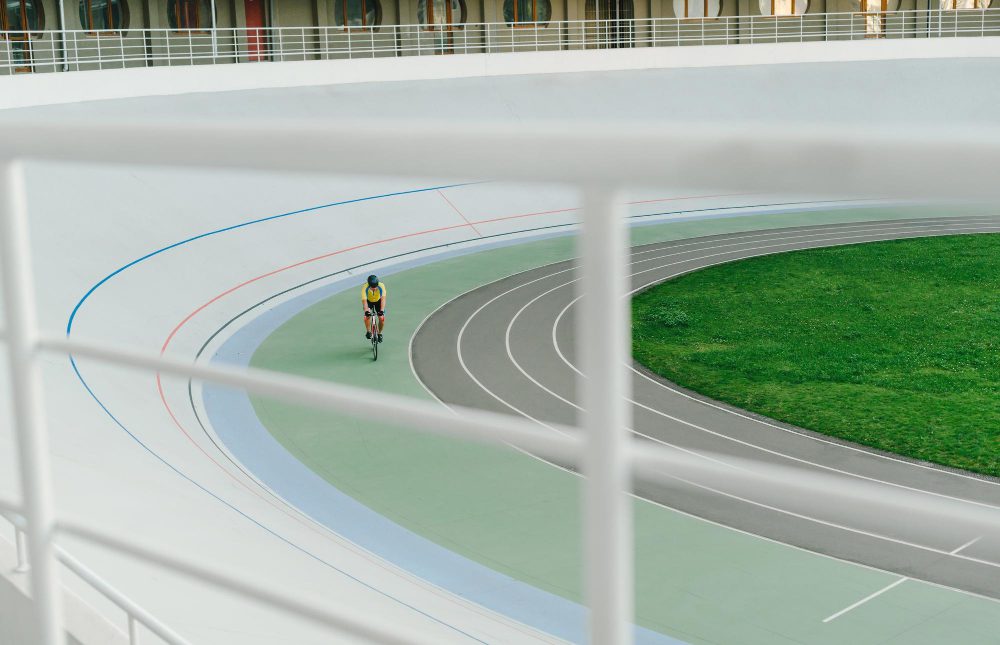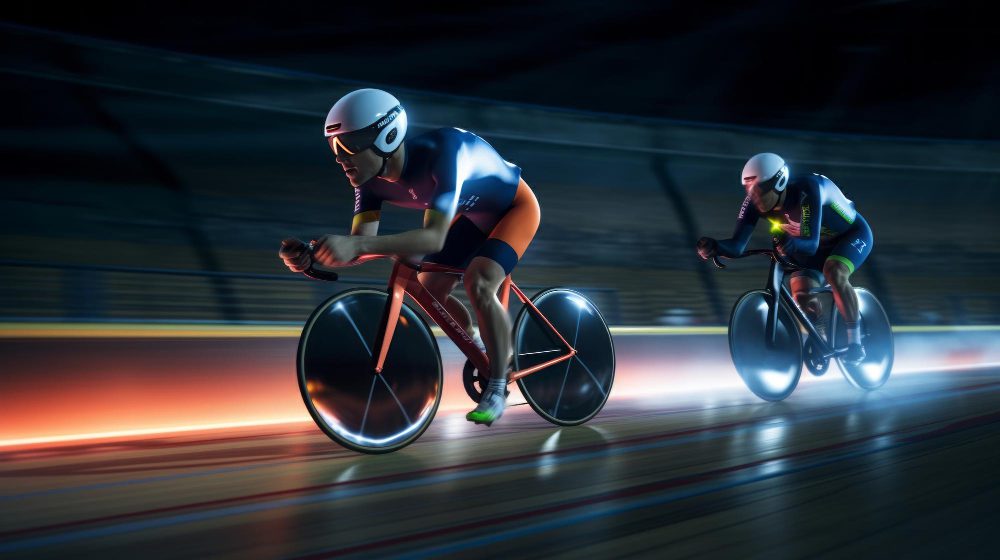How fast can you go in a velodrome?
Velodrome cycling is a thrilling and high-speed sport that has gained popularity in the UK in recent years. From recreational riders to elite athletes, many people are drawn to the excitement and challenge of riding in a velodrome. But just how fast can one go on the track? In this article, we will explore the speeds achieved in velodrome cycling and what factors contribute to these impressive velocities.
The Need for Speed
Velodrome cycling is known for its incredible speed, with riders reaching astonishing velocities as they navigate the banked corners of the track. The design of the velodrome itself plays a significant role in facilitating these high speeds. The smooth surface and steep banking allow riders to maintain momentum and minimize resistance, allowing them to achieve remarkable speeds.
The type of event also determines the speed at which riders can go in a velodrome. Track sprinters, for example, specialize in explosive bursts of speed over short distances. They can reach speeds of up to 75 miles per hour (120 kilometers per hour) during their final sprints, making them some of the fastest athletes on two wheels.
On the other hand, endurance events such as the individual pursuit or Madison races maintain high average speeds over longer distances. Elite endurance riders can often hold speeds around 30-35 miles per hour (48-56 kilometers per hour) for extended periods, showcasing their impressive stamina and sustained power output.
Factors Affecting Speed
Several factors impact the speed achieved in a velodrome. One crucial element is the rider’s skill and experience. Mastery of riding technique and aerodynamics can lead to significant speed improvements. Additionally, the bike setup, including the choice of gearing and wheel selection, plays a vital role in maximizing speed.
The track conditions also affect speed. A well-maintained velodrome with a smooth surface allows for minimal rolling resistance, promoting faster speeds. Weather conditions, especially wind, can either assist or hinder riders’ speed. Tailwinds can provide a boost, while headwinds create additional resistance, making it more challenging to maintain high velocities.
Quote:
“The exhilaration of reaching such high speeds in a velodrome is indescribable. It’s like flying on two wheels, feeling the G-forces as you navigate the banked corners.” – Elite Velodrome Cyclist
Record-breaking Speeds
Several records have been set in velodrome cycling, showcasing the incredible speeds achievable on the track. One notable record is the world hour record, which measures the distance covered by a rider in one hour. The current men’s record stands at over 55.089 kilometers (34.220 miles), averaging a speed of approximately 35 miles per hour (56 kilometers per hour).
Other prestigious records include the flying kilometer and 200-meter time trial, which measure the speed achieved over shorter distances. These records often surpass speeds of 50 miles per hour (80 kilometers per hour), demonstrating the remarkable acceleration and power of track cyclists.
Tips for Speed Seekers
If you’re inspired to test your own speed in a velodrome, here are some tips to help you reach faster velocities:
- Focus on developing efficient riding technique and body positioning to minimize air resistance.
- Experiment with different gear ratios to find the optimal setup for your riding style.
- Train both speed and endurance to improve your power output and sustained speed over longer distances.
- Seek guidance from experienced velodrome cyclists or coaches to refine your skills and reach your maximum potential.
Whether you’re a professional rider or a recreational cyclist, the thrill of achieving high speeds in a velodrome is an exhilarating experience. With the right training, technique, and equipment, you too can join the ranks of those who push the limits of velocity on the track.
How much faster are male cyclists?
When it comes to cycling, there is often a debate about the speed difference between male and female cyclists. While it’s true that males tend to dominate professional cycling races, it’s important to understand the factors that contribute to this difference in speed.
Physical Differences
One of the key reasons for the speed disparity is the physiological differences between males and females. On average, men have higher muscle mass and greater aerobic capacity, allowing them to generate more power and endurance on the bike. These factors can give male cyclists an advantage, especially in long-distance races where sustained power output is crucial.
Professional Racing
In professional cycling, the speed discrepancy between male and female cyclists is more pronounced. This is primarily due to the difference in race distances and competition level. Male professional races are generally longer and more challenging, requiring higher levels of strength and power. As a result, male cyclists often achieve faster speeds than their female counterparts.
Equality in Amateur Cycling
While professional cycling may showcase a significant speed difference, it’s important to note that in amateur cycling, the gap can be smaller or even non-existent. In recreational cycling clubs and local events, male and female cyclists can compete on an equal footing, with overall speed being determined by individual training, fitness, and experience rather than gender.
The Importance of Training
Training plays a crucial role in improving cycling speed regardless of gender. Both male and female cyclists can benefit from structured training programs that focus on building strength, endurance, and technique. By incorporating interval training, hill climbs, and proper recovery, cyclists can improve their overall speed and performance.
“Speed is not solely determined by gender but rather by various factors such as training, genetics, and individual effort.” – Cycling Coach
How fast do they go around a velodrome?
Velodrome cycling, also known as track cycling, is an exhilarating sport that requires speed, precision, and skill. Athletes compete on specially-designed indoor tracks called velodromes, where they reach incredible speeds on their bikes. But just how fast do these cyclists go around a velodrome?
Speed Records:
The speed that cyclists can achieve on a velodrome is truly impressive. In fact, several speed records have been set by both male and female athletes. One of the most famous records is the Hour Record, where cyclists attempt to cover the greatest distance in one hour.
The current men’s Hour Record, set by Sir Bradley Wiggins in 2015, stands at an astonishing 54.526 kilometers (33.881 miles).
In the women’s category, the Hour Record is held by Vittoria Bussi, who covered a distance of 48.007 kilometers (29.828 miles) in 2018.
Race Speeds:
During races, cyclists go even faster, reaching incredible speeds during sprints and time trials. The exact speed depends on various factors such as the length of the track and the skill of the cyclist.
In a sprint race, top-level track cyclists can reach speeds of up to 70 kilometers per hour (43 miles per hour), while during a keirin race, they can average around 60 kilometers per hour (37 miles per hour).” – Cycling expert, John Davis.
Safety Measures:
Given the high speeds involved, safety is of utmost importance in velodrome cycling. Cyclists wear protective gear, including helmets and special clothing, to minimize the risk of injury. The design of the velodrome track is also crucial in ensuring safety, with steep banked turns that allow cyclists to maintain their speed while navigating sharp corners.
Experience the Thrill:
If you’re interested in experiencing the thrill of cycling on a velodrome, many facilities offer track cycling sessions for beginners. These sessions provide a safe and controlled environment for people to try out this exciting sport under the guidance of experienced instructors.
So, the next time you watch a velodrome race or even get a chance to cycle on a track yourself, remember the incredible speeds these athletes are capable of reaching!
How fast can the average man bike a mile?
When it comes to biking, speed can be an important factor for both recreational cyclists and competitive athletes. Many people wonder how fast they can bike a mile, especially if they are just starting out or looking to improve their cycling performance. However, the average speed at which a person can bike a mile can vary depending on various factors such as fitness levels, terrain, weather conditions, and the type of bike being used.
Factors that influence biking speed
Several factors can affect how fast the average man can bike a mile:
- Fitness level: A person’s fitness level plays a significant role in determining biking speed. Well-trained cyclists who engage in regular cardiovascular exercise tend to have higher average speeds compared to individuals who are less active.
- Terrain: The type of terrain being ridden can impact biking speed. Riding on flat ground allows for higher speeds compared to hilly or mountainous terrain.
- Weather conditions: Strong headwinds or adverse weather conditions can significantly affect biking speed, making it more challenging to maintain high speeds.
- Type of bike: The type of bike being used can also impact biking speed. Road bikes, known for their lightweight design and aerodynamic positioning, are generally faster than other types of bikes such as mountain bikes or hybrid bikes.
Average biking speeds
It’s difficult to determine an exact average biking speed for the average man, as individual abilities and experiences can vary greatly. However, studies suggest that the average recreational cyclist can bike a mile in approximately 4-6 minutes, equating to an average speed of 10-15 miles per hour (mph).
“The average recreational cyclist can bike a mile in approximately 4-6 minutes, equating to an average speed of 10-15 miles per hour (mph).”
For more experienced and trained cyclists, the average speed can be significantly higher. Professional cyclists, for example, can maintain speeds over 25 mph during races.
Improving biking speed
If you’re looking to improve your biking speed, there are several strategies you can employ:
- Training: Regular training rides focusing on speed intervals and endurance can help improve overall biking speed.
- Proper nutrition: A well-balanced diet with adequate fueling before and during rides can enhance performance.
- Bike maintenance: Ensuring your bike is properly maintained, including regular tune-ups and tire pressure checks, can optimize performance.
- Body positioning: Optimizing your body position on the bike, such as reducing wind resistance, can help increase speed.
Remember, biking speed is not the only measure of cycling ability. Enjoyment, safety, and personal goals should also be considered when cycling.
How fast do they cycle in the velodrome?
Cycling in a velodrome is an exhilarating and thrilling experience, with riders whizzing around the track at incredible speeds. The velodrome, a specially designed cycling track with steeply banked corners, allows cyclists to reach astonishing velocities as they compete against one another. But just how fast do they actually go?
The world’s fastest velodrome speed
The current Guinness World Record for the fastest speed achieved in a velodrome stands at 84.6 miles per hour (136.8 kilometers per hour). This record was set by Dutch cyclist Sebastiaan Bowier in 2013 at the World Human Powered Speed Challenge in Nevada, USA. Riding a highly streamlined recumbent bicycle, Bowier powered his way to this incredible speed, showcasing the immense potential of human-powered vehicles.
Professional track cycling speed
While most competitive track cyclists may not reach such mind-boggling speeds, they still ride impressively fast in the velodrome. In professional track cycling events, the average speed ranges from 25 to 35 miles per hour (40 to 56 kilometers per hour) depending on the discipline.
In sprint events, such as the kilometer time trial, cyclists can reach speeds over 40 miles per hour (64 kilometers per hour) as they give everything to complete the distance as quickly as possible. Endurance events, like the individual pursuit or Madison races, usually involve sustained speeds of around 30 miles per hour (48 kilometers per hour) for extended periods of time.
Factors influencing speed
Several factors contribute to the high speeds attained by track cyclists in the velodrome:
- The aerodynamic design of bicycles – Track bikes are specifically designed to minimize wind resistance, with their sleek frames, streamlined profiles, and no unnecessary components.
- The banked track – Velodromes have steeply banked corners that allow cyclists to maintain higher speeds while cornering, reducing the risk of sliding or losing control.
- Training and skill – Professional track cyclists undergo rigorous training programs to enhance their speed, stamina, and cycling techniques, enabling them to reach peak performance in the velodrome.
“Cycling in the velodrome pushes the boundaries of human performance and showcases the incredible speed and agility of these athletes.”
In conclusion
The speeds achieved by cyclists in the velodrome are truly mesmerizing. Whether it’s breaking world records or competing in professional events, track cyclists demonstrate remarkable athleticism and skill as they ride at high speeds around the track. The combination of aerodynamic bikes, banked tracks, and dedicated training all contribute to these impressive displays of speed. So next time you watch a track cycling event, remember the immense effort and determination it takes to pedal at such velocities!
Conclusion
While there may be a difference in speed between male and female cyclists, it’s not solely due to gender. Physiological factors, race distances, and competition levels all contribute to the varying speeds observed in professional cycling. However, in amateur cycling, both genders can compete on more equal terms, with individual training and effort playing a significant role in determining speed.



